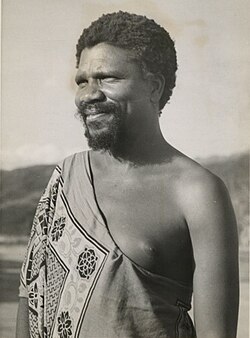Top Qs
Timeline
Chat
Perspective
List of longest-reigning monarchs
From Wikipedia, the free encyclopedia
Remove ads
This is a list of the longest-reigning monarchs in history, detailing the monarchs and lifelong leaders who have reigned the longest, ranked by length of reign.
Louis XIV, the longest-reigning sovereign monarch whose reign is verifiable by exact date
Monarchs of sovereign states with verifiable reigns by exact date
Summarize
Perspective
The following are the 25 longest-reigning monarchs of states who were internationally recognised as sovereign for most or all of their reign. Roman emperors Constantine VIII and Basil II, reigning for 66 years in total (962–1028) and for 65 years in total (960–1025) respectively, are not included, because for part of those periods they reigned only nominally as junior co-emperors alongside senior emperors.
Regencies (and coregencies as a "senior" monarch) are not counted against monarchs, hence Louis XIV is listed first among the monarchs of sovereign states despite his mother Anne of Austria being his regent for eight years. A distinction is not made between absolute and constitutional monarchs, hence Elizabeth II is listed second despite being a figurehead her entire reign.
The currently living longest-reigning monarch, Hassanal Bolkiah of Brunei, is not included on the list because Brunei was not a sovereign state until 1 January 1984. He will be eligible for inclusion if he is still reigning by 1 January 2041 and surpasses James VI and I's rule of 57 years, 246 days, by which time, he will be 94 years old.
Remove ads
Monarchs of dependent or constituent states with verifiable reigns by exact date
Summarize
Perspective
The table below contains 100 monarchs of states that were not independent sovereigns for at least a portion of their reigns.
Sobhuza II, the longest-reigning monarch ever whose reign is verifiable by exact date
Remove ads
Monarchs whose exact dates of rule are unknown
Summarize
Perspective
These monarchs are grouped according to length of reign by year in whole numbers. Within each year-grouping, they appear alphabetically. In a given year, there may have been a wide array of actual reign lengths based on days. Thus, this table does not present a precise ranking by total length of reign. The list is limited to those that might reasonably be expected to lie within the range of those in the tables above, at minimum 57 years. Emphasised states were sovereign. Japanese legendary emperors, according to the ancient Japanese calendar, reigned for very long terms of 60–70 years each. The longest ruler of the legendary emperors, Emperor Kōan, was claimed to have reigned for about 101 years. These figures are not included in the table because they are regarded as inaccurate by modern scholars. For those, see Longevity myths. Rulers with both independent and dependent rules are combined.
Remove ads
See also
Notes
- Elizabeth was Queen of many other states, but other than these four, her reign was shorter. Lengths listed below are for Elizabeth as monarch of an independent country or dominion; except for Jamaica for which she would rank 17th, none would entitle her to a place on this list. The following states were British dominions at the start of Queen Elizabeth II's reign in 1952, but became independent as republics during her reign:The following states were not sovereign at the start of Queen Elizabeth II's reign in 1952, but became sovereign and later became republics during her reign:
 Pakistan (including Bangladesh) (republic 23 March 1956; 4 years, 46 days)
Pakistan (including Bangladesh) (republic 23 March 1956; 4 years, 46 days) South Africa (republic 31 May 1961; 9 years, 114 days)
South Africa (republic 31 May 1961; 9 years, 114 days) Ceylon (republic, with the name Sri Lanka, 22 May 1972; 20 years, 106 days)
Ceylon (republic, with the name Sri Lanka, 22 May 1972; 20 years, 106 days)
The following states were not sovereign at the start of Queen Elizabeth II's reign in 1952, but became sovereign during her reign and retained her as Queen: Ghana (sovereign 6 March 1957, republic 1 July 1961; 4 years, 87 days)
Ghana (sovereign 6 March 1957, republic 1 July 1961; 4 years, 87 days) Nigeria (sovereign 1 October 1960, republic 1 October 1963; 3 years, 0 days)
Nigeria (sovereign 1 October 1960, republic 1 October 1963; 3 years, 0 days) Sierra Leone (sovereign 27 April 1961, republic 19 April 1971; 9 years, 357 days)
Sierra Leone (sovereign 27 April 1961, republic 19 April 1971; 9 years, 357 days) Tanganyika (sovereign 9 December 1961, republic 9 December 1962; 1 year, 0 days)
Tanganyika (sovereign 9 December 1961, republic 9 December 1962; 1 year, 0 days) Trinidad and Tobago (sovereign 31 August 1962, republic 1 August 1976; 13 years, 336 days)
Trinidad and Tobago (sovereign 31 August 1962, republic 1 August 1976; 13 years, 336 days) Uganda (sovereign 9 October 1962, republic 9 October 1963; 1 year, 0 days)
Uganda (sovereign 9 October 1962, republic 9 October 1963; 1 year, 0 days) Kenya (sovereign 12 December 1963, republic 12 December 1964; 1 year, 0 days)
Kenya (sovereign 12 December 1963, republic 12 December 1964; 1 year, 0 days) Malawi (sovereign 6 July 1964, republic 6 July 1966; 2 years, 0 days)
Malawi (sovereign 6 July 1964, republic 6 July 1966; 2 years, 0 days) Malta (sovereign 21 September 1964, republic 13 December 1974; 10 years, 83 days)
Malta (sovereign 21 September 1964, republic 13 December 1974; 10 years, 83 days) The Gambia (sovereign 18 February 1965, republic 24 April 1970; 5 years, 65 days)
The Gambia (sovereign 18 February 1965, republic 24 April 1970; 5 years, 65 days) Guyana (sovereign 26 May 1966, republic 23 February 1970; 3 years, 273 days)
Guyana (sovereign 26 May 1966, republic 23 February 1970; 3 years, 273 days) Barbados (sovereign 30 November 1966, republic 30 November 2021; 55 years, 0 days)
Barbados (sovereign 30 November 1966, republic 30 November 2021; 55 years, 0 days) Mauritius (sovereign 12 March 1968, republic 12 March 1992; 24 years, 0 days)
Mauritius (sovereign 12 March 1968, republic 12 March 1992; 24 years, 0 days) Fiji (sovereign 10 October 1970, republic 6 October 1987; 16 years, 361 days)
Fiji (sovereign 10 October 1970, republic 6 October 1987; 16 years, 361 days)
 Jamaica (sovereign 6 August 1962; 60 years, 33 days)
Jamaica (sovereign 6 August 1962; 60 years, 33 days) Bahamas (sovereign 10 July 1973; 49 years, 60 days)
Bahamas (sovereign 10 July 1973; 49 years, 60 days) Grenada (sovereign 7 February 1974; 48 years, 213 days)
Grenada (sovereign 7 February 1974; 48 years, 213 days) Papua New Guinea (sovereign 16 September 1975; 46 years, 357 days)
Papua New Guinea (sovereign 16 September 1975; 46 years, 357 days) Solomon Islands (sovereign 7 July 1978; 44 years, 63 days)
Solomon Islands (sovereign 7 July 1978; 44 years, 63 days) Tuvalu (sovereign 1 October 1978; 43 years, 342 days)
Tuvalu (sovereign 1 October 1978; 43 years, 342 days) Saint Lucia (sovereign 22 February 1979; 43 years, 198 days)
Saint Lucia (sovereign 22 February 1979; 43 years, 198 days) Saint Vincent and the Grenadines (sovereign 27 October 1979; 42 years, 316 days)
Saint Vincent and the Grenadines (sovereign 27 October 1979; 42 years, 316 days) Belize (sovereign 21 September 1981; 40 years, 352 days)
Belize (sovereign 21 September 1981; 40 years, 352 days) Antigua and Barbuda (sovereign 1 November 1981; 40 years, 311 days)
Antigua and Barbuda (sovereign 1 November 1981; 40 years, 311 days) Saint Kitts and Nevis (sovereign 19 September 1983; 38 years, 354 days)
Saint Kitts and Nevis (sovereign 19 September 1983; 38 years, 354 days)
- Length of reign applies to the independent states that have remained monarchies since her accession: Australia, Canada, New Zealand, and the United Kingdom.
- Real name Bhumibol Adulyadej
- In the Mayan calendar, acceded 9.9.2.4.8, 5 Lamat 1 Mol; died 9.12.11.5.18, 6 Etz'nab 11 Yax. Long Count dates are converted using the GMT+2 correlation and the Julian Calendar.[7][8]
- In the Maya calendar, acceded 9.9.14.17.5, 6 Chikchan 18 K'ayab; died 9.13.3.5.7 12 Manik' 0 Yaxk'in. Western date is given by the GMT+2 correlation in the Julian Calendar.[11][12]
- Posthumous name as used in Japan; commonly referred to by his real name Hirohito in the West.
- Served as regent (sesshō) for his father Emperor Taishō, from 29 November 1921 until his formal accession.
- Longest de jure ruler of China, although the Qianlong Emperor held longer de facto power.
- Sometimes called "Itzamnaaj Bahlam II",[11] or "Shield Jaguar".[12]
- In the Maya calendar, acceded 9.12.9.8.1 5 Imix 4 Mak; died 9.15.10.17.14 6 Ix 12 Yaxk'in. Western date is given by the GMT+2 correlation in the Julian Calendar.[11]
- In the Maya calendar, acceded 9.14.13.4.17 12 Kab'an 5 K'ayab'; died 9.17.14.13.2 11 Ik 5 Yax. Western date is given by the GMT+2 correlation in the Julian Calendar.[11]
- Longest de facto ruler of China, although the Kangxi Emperor held longer de jure power.
- Abdicated, but maintained de facto power as Emperor Emeritus until 7 February 1799.
- The Electorate of Hanover (formally known as the "Electorate of Brunswick-Lunenburg") was reformed as the rump Kingdom of Westphalia in 1807, which was not recognized by George III's government, before being reestablished as the Kingdom of Hanover in 1814 by the Congress of Vienna.
- Great Britain and Ireland were joined as the United Kingdom effective 1 January 1801 by the Acts of Union 1800.
- James VI of Scotland was also the King of England and King of Ireland as James I, although he only became King of England and Ireland after the death of Elizabeth I in 1603.
- He was proclaimed king at the age of four months, and his grandmother, Labotsibeni Mdluli, acted as regent until 22 December 1921 and then formally transferred all monarchial power to Sobhuza II. Some sources take the date of succession as the date on which his grandmother handed over the royal duties to him, not when he was proclaimed king. Swaziland became independent from the United Kingdom in 1968.
- Formally "abdicated" on 6 May 1723 but officially continued to rule until his death on 29 June 1724 after which point his son Maeda Yoshinori assumed full power.
- Part of British East India Company until 1858, British Raj from 1858.
- Heinrich XI succeeded to the throne as Count of Reuss-Obergreiz in 1723 on the death of his brother, Heinrich IX (all male members of the family were named Heinrich in order of birth, even across cousins). In 1778 he became the first Prince of Reuss Elder Line.
- Part of Holy Roman Empire until 1806, from 1815 part of the German Confederation.
- Ruled as Count until 1807, as Prince thereafter.
- Count John Louis was born after the death of his father Count Johann II on 25 July 1472; he succeeded to the throne at birth.
- Acceded to the Union of India on 15 August 1947. Merged Kapurthala into the Patiala and Eastern Punjab States Union (PEPSU) on 5 May 1948, relinquished his sovereign powers with effect from 20 August.[55] Rajpramukh of the PEPSU from 5 May 1948 until his death on 17 June 1949
- Part of Holy Roman Empire until 1806, from 1815 part of the German Confederation.
- Part of Holy Roman Empire until 1806, from 1815 part of the German Confederation.
- Eleanor was Duchess of Aquitaine in her own right, although medieval law dictated that her various husbands (Louis VII of France, Henry II of England) and sons (Richard I and John of England) reign with her jointly.
- Merged his state into the United State of Kathiawad on 15 February 1948, but lived until 28 June 1954.
- Frederick Augustus I was known as Frederick Augustus III before 1806.
- Part of Holy Roman Empire until 1806, from 1815 part of the German Confederation.
- Part of British protectorate from 1880
- Was forced to abdicate by the British in 1923 but the Bahrinis did not recognize this and considered him the rightful monarch until 1932.
- Part of Holy Roman Empire until 1806, from 1815 part of the German Confederation.
- Reigned in dispute with Sultan bin Salim Al Qasimi until 17 July 1948.
- Philipp II ruled as co-ruler with his brother till 1442 when they divided their inheritances.
- Succeeded on 14 November 1867, but was officially enthroned on 20 December 1867
- Possibly reigned about 1295–1370.
- Pepi II's figure has been disputed by some Egyptologists who favour a shorter reign length of 64 years, given the absence of attested dates known for Pepi after his 31st Count, which would equate to 62 years assuming the count to be biennial. Others point, however, to the consistency between the existing historical sources all crediting Pepi with over 90 years of reign. Finally, the lack of evidence beyond his 62nd year does not preclude a much longer reign, especially in view of the decay of the Egyptian state into the chaos of the First Intermediate Period at the end of Pepi's reign.
- A dispute exists concerning when Taejo's reign ended. The Book of the Later Han cites 121 as his death date. The traditionally believed one is 146 since the Samguk Sagi claims that he abdicated in that year.
- While the chronology of his reign is disputed, his existence is generally accepted by most historians.
- Some sources just give 80 years of lifespan not reign and Chronology disputed
- Other sources put his start date as 679 or 688.
- His start date is also sometimes given as 1537
- Shapur II was crowned in utero: the crown was placed upon his mother's belly. This child, named Shapur, was therefore born king; the government was conducted by his mother and the magnates.
- Abdicated on 15 August 1947, with effects from 1 January 1948 following the dissolution of the British Raj but lived until 1963.
- Alternatively his death date is put as 469. Might have co-reigned with his son until 451
- Historians debate whether he was a Chinese or Vietnamese ruler (named Triệu Vũ Đế)
- Sometimes her aunt Anne de La Tour d'Auvergne's death is given as June 1524 or 16 June 1524 (see for example her French wikipedia article), though sources seem to be laking for such specific dates and so she remains here. If sources are found for 16 June, she can be moved into the second section with 64 years, 203 days as her reign length
- An alternate start date is put as being 451. Could have possibly co-ruled with his father since 469.
- Had a interruption between 1818 and 1822 but later regained it in 1822, counting both of his periods he had a reign of 59 years.
- Regent until 1921.
- Part of German East Africa from 1890.
- He also ruled Russia for a brief period between 1068 and 1069.
Remove ads
References
Sources
Wikiwand - on
Seamless Wikipedia browsing. On steroids.
Remove ads
























































































































































